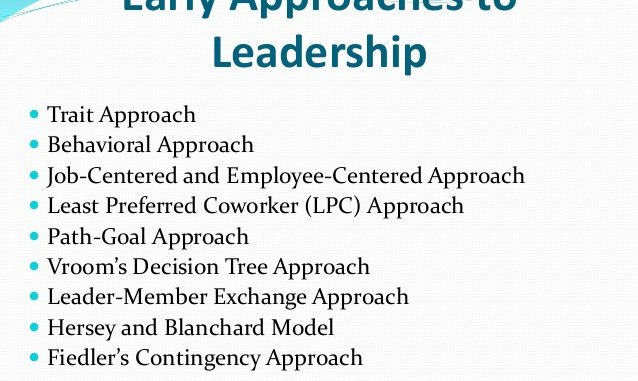
Approaches to Leadership
Approaches to leadership culture are defined by the collective action of formal and informal leaders acting together in the help of organizational goals that ultimately marks the difference. When we speak about leadership it is both leaders themselves and the relationship among them, the skills and behavior of the leaders are required to execute the organization strategy and make the most wanted culture. The collective leadership capabilities of the leaders acting together in the groups and across the boundaries to implement strategies.
Most common modern approaches to leadership
1)Innovative leadership: Leaders grasp the entire situation and go beyond the usual course of action. They are good at visualizing the future and know exactly what is working and what not as well as bring new ideas and vision into reality.
2)Authoritative leadership: Leaders dictate procedures and policies, decide the goals that need to be achieved, and control and direct activities without meaningful participation by other employees.
3)Pacesetter: Considering that communication plays an important role in effective leadership, pacesetter leaders use proper communication in setting high standards of performance for both the group and themselves. They optimize behaviors that are sought from others in the group.
4)Servant: This is one of the most common approaches to leadership and the one most widely used in practice. Leaders put their service to other people in the group before their own interests and include the team in decision making.
5)Transformational: In today’s modern world, society is in need of transformational leaders who would bring positive and meaningful changes. Transformational leadership is where the leaders expect transformation on their teams even if it is uncomfortable and believe that everyone will do their best. They also serve as inspiration and role models to their people.
6)Charismatic or inspiring leadership: This type is primarily based on the leader’s charisma or his/her personal qualities and is one of the most common approaches to leadership. Leaders are seen to possess a strong sense of vision and mission and arouse very strong emotions in each of their followers. Leading others is determined by the type and source of power that is held by the leaders.
You may also like: Leadership Traits and Styles

Leave a Reply